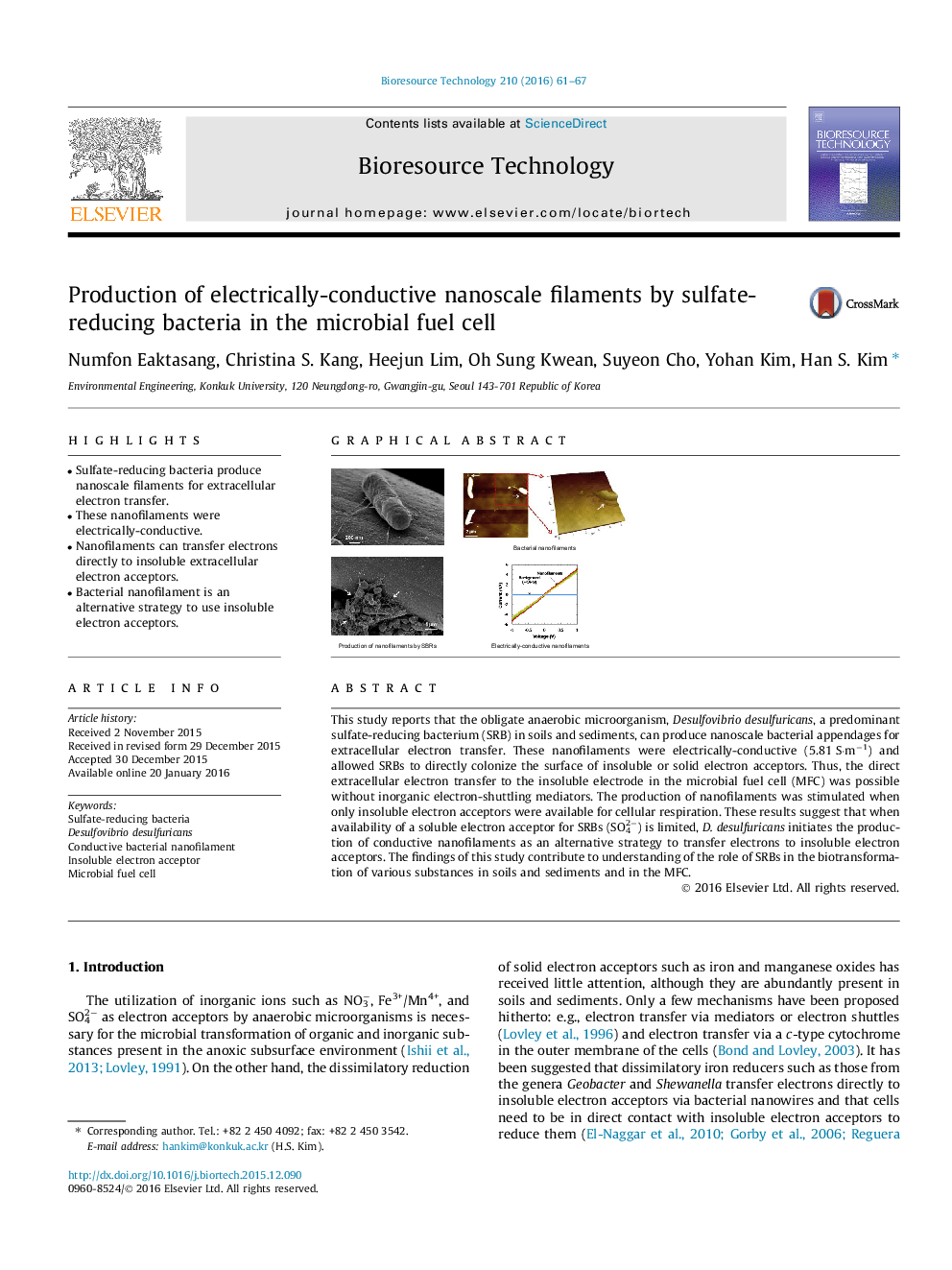| Article ID | Journal | Published Year | Pages | File Type |
|---|---|---|---|---|
| 679014 | Bioresource Technology | 2016 | 7 Pages |
•Sulfate-reducing bacteria produce nanoscale filaments for extracellular electron transfer.•These nanofilaments were electrically-conductive.•Nanofilaments can transfer electrons directly to insoluble extracellular electron acceptors.•Bacterial nanofilament is an alternative strategy to use insoluble electron acceptors.
This study reports that the obligate anaerobic microorganism, Desulfovibrio desulfuricans, a predominant sulfate-reducing bacterium (SRB) in soils and sediments, can produce nanoscale bacterial appendages for extracellular electron transfer. These nanofilaments were electrically-conductive (5.81 S·m−1) and allowed SRBs to directly colonize the surface of insoluble or solid electron acceptors. Thus, the direct extracellular electron transfer to the insoluble electrode in the microbial fuel cell (MFC) was possible without inorganic electron-shuttling mediators. The production of nanofilaments was stimulated when only insoluble electron acceptors were available for cellular respiration. These results suggest that when availability of a soluble electron acceptor for SRBs (SO42−) is limited, D. desulfuricans initiates the production of conductive nanofilaments as an alternative strategy to transfer electrons to insoluble electron acceptors. The findings of this study contribute to understanding of the role of SRBs in the biotransformation of various substances in soils and sediments and in the MFC.
Graphical abstractFigure optionsDownload full-size imageDownload as PowerPoint slide
